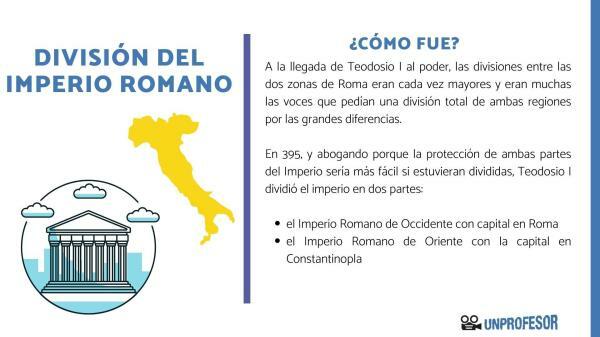14 characteristics of the BYZANTINE EMPIRE

The changes between eras cause great empires to fall, due to the difficulty of staying in power in the midst of enormous changes. But there are cases in which an empire has managed to withstand the change of era. One of these empires is the Byzantine, which managed to survive between the Old Age and the Middle Ages, being relevant in both. And to know its importance in this lesson of a Teacher we are going to talk about the Characteristics of the Byzantine Empire.
The Byzantine Empire, also know as Eastern Roman Empire, was a division of Roman empire created in the last years of this great civilization to be able to control the enormous extension that it had reached. After the fall of the Western Roman Empire at the hands of the Germanic peoples, the power of the Romans passed to the eastern zone. Over time, the Byzantine Empire changed and lost Roman influence, remaining for centuries in the Middle Ages.
Although the extension of the Byzantine Empire varied over the centuries, we must say that it habitually occupied what we currently know as
Turkey and Greece. On the other hand, it had territories at certain times on the Mediterranean coast, in lower Italy and in Egypt. His capital, on the other hand, remained in Constantinople, being what we currently know as istanbul.The Byzantine Empire took place between 285 and 1453, being, therefore, one of the great empires of the end of the Ancient Age and of a large part of the Middle Ages. During much of these years it was considered the last bastion of classical Europe, and as a wall to stop the advance of Islam.
Generally, it is considered to Byzantium as the symbol of the division between the Eastern and Western cultures.

To continue this lesson from a Teacher we must talk about the characteristics of the Byzantine Empire to better understand this fantastic civilization, as the characteristics will help us understand many of the reasons why this culture was so important.
Thus, the Characteristics of the Byzantine Empire are the following:
- were considered heirs of the Roman Empire, even calling themselves Romans. Over time, this heritage was lost due to the great changes suffered by the empire.
- Was a christian Empire, although there were many ethnic differences within it, so we can say that it was a multi-ethnic Christian empire. With the arrival of the Schism, the Greek Orthodox Church was created, changing the religion of Byzantium.
- The governor was basileus, being a position similar to that of king and emperor. It was not a hereditary position, but the basileus was chosen in a procedure involving the Senate, the army and a series of representatives chosen by the people.
- The governor was very attached to religion, and the office was considered to be divine.
- The government was autocratic so the basileus had power over everything. He controlled the administration, the army, the legislation, and was the judge in the affairs of the state.
- The Byzantine administration was controlled by the officials, who were organized by a hierarchy according to the responsibility of each one.
- Like almost all societies of the time, the Byzantine Empire based a large part of its economy on Agricultural work, being its main productions nuts, wheat, legumes and wine.
- Their position in the middle of Europe and Asia made them one of the most merchant civilizations of the time. Their trade routes reached from the Iberian Peninsula to the easternmost area of Asia, and also included other areas such as North Africa.
- the empire was divided into provinces or themes, each of these being governed by a strategist, who made up the upper classes.
- attached great importance to army, especially to defend the territories they already had. Most of the money went to improve the troops.
- they charged taxes to the population, causing great inequality because the lower classes had less facility to pay them.
- Initially, their language was Latin, but after the disappearance of the Western Roman Empire, their language changed to Greek. We must bear in mind that the Byzantine Empire was part of Greece, so there were many people whose native language was Greek.
- One of his greatest productions was the silk, which was highly valued and the artisans who dedicated themselves to it were important figures in society.
- They had slaves and serfs, which mostly came from nations defeated in wars. They were the only social class without rights, although they also had no obligations such as taxes.
And these are the main characteristics of the Byzantine Empire, an empire that he was leading for years but that finally ended with his drop.

Tome, i. (1946). THE BYZANTINE EMPIRE.
Barreras, D., & Gómez, C. d (2010). Brief history of the Byzantine Empire (pp. 18-21). Nowtilus.
Chrysos, E. (2004). The Byzantine Empire 565-1025 (Vol. 21). Editorial Icaria.



